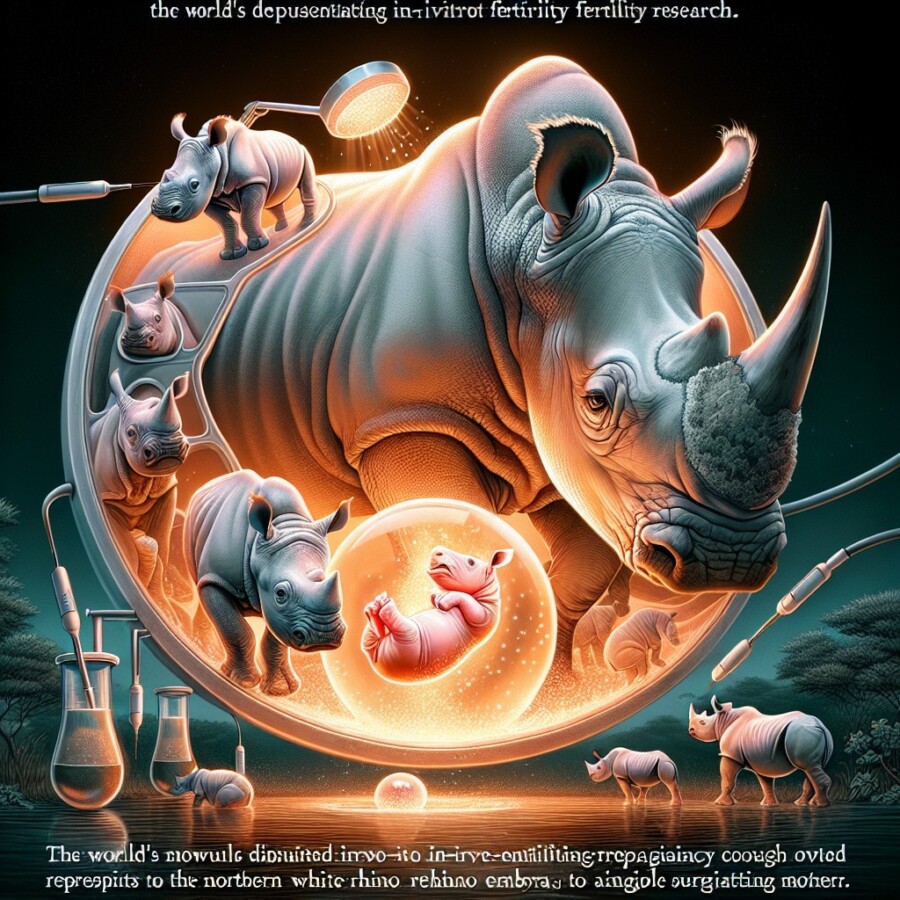South Korea is facing a serious issue with its declining birth rate. The country currently has the lowest birth rate in the world, and it continues to decrease each year. In 2023, the birth rate fell by 8% to 0.72, far below the replacement rate of 2.1. If this trend continues, the population is estimated to halve by 2100. This has led to politicians declaring it a “national emergency” and implementing various measures to encourage childbirth.
Despite the government’s efforts, financial incentives such as cash rewards, subsidized housing, and free taxis have not been effective in increasing birth rates. This has led to policymakers brainstorming more unconventional solutions, such as hiring nannies from South East Asia and exempting men from military service if they have three children before the age of 30. However, these measures have been criticized for not addressing the needs and concerns of young people, especially women.
One of the main reasons why South Korean women are choosing not to have children is the difficulty of finding a suitable partner who will share the responsibilities of childcare and household chores. The long working hours and demanding work culture in Korea make it challenging for women to balance their careers and family life. There is also a fear among women that taking time off to have a child may result in them losing their jobs or facing discrimination in the workplace.
The high cost of housing and private education also contributes to the low birth rate. Many couples are unable to afford the expenses associated with raising a child, especially in major cities like Seoul. Private education is seen as essential for a child’s success, leading to financial burdens for parents. This has made Korea the most expensive country in the world to raise a child.
The social expectations and pressures placed on women to prioritize their careers over starting a family have also influenced their decision not to have children. Many highly educated women in Korea feel that they have to choose between having a successful career or having a family. The gender pay gap and limited opportunities for women in the workforce further exacerbate this trade-off.
Despite the challenges and concerns, some women still express a desire to have children. However, societal and legal barriers, such as the illegality of same-sex marriage and restrictions on using sperm donors, prevent them from fulfilling this desire. The government is starting to recognize the complexity of the issue and is considering treating the low birth rate as a structural problem.
In conclusion, South Korea’s declining birth rate is a complex issue influenced by various factors such as the difficulty of finding suitable partners, demanding work culture, high cost of living, and societal expectations. The government’s efforts to address the problem have not been successful so far, and a more comprehensive approach that considers the needs and concerns of young people, especially women, is necessary.
Original news source: Why South Korean women aren’t having babies (BBC)
🎧 Listen:
Slow
Normal
Fast
📖 Vocabulary:
| 1 | declining | Decreasing or becoming less |
| 2 | unconventional | Not traditional or typical |
| 3 | subsidized | Supported with financial assistance |
| 4 | brainstorming | Generating ideas or strategies in a creative way |
| 5 | exempting | Freeing someone from an obligation |
| 6 | responsibilities | Duties or tasks that one is required or expected to carry out |
| 7 | discrimination | Unfair treatment based on prejudice against certain groups |
| 8 | burdens | Heavy loads, often referring to stress or difficulties |
| 9 | prioritize | To treat something as more important than other things |
| 10 | exacerbated | Made more severe or intense |
| 11 | societal | Relating to society or its organization |
| 12 | barriers | Obstacles or hindrances that prevent progress |
| 13 | structural | Related to the basic organization or construction of a system |
| 14 | comprehensive | Thorough and covering all aspects |
| 15 | essential | Absolutely necessary or extremely important |
Group or Classroom Activities
Warm-up Activities:
– News Summary
Instructions:
1. Divide the class into small groups.
2. Assign each group a specific section of the article to read and summarize.
3. Each group should discuss and highlight the key points of their assigned section.
4. Groups take turns presenting their summaries to the class.
5. Encourage discussion and comparison of the different summaries.
– Opinion Poll
Instructions:
1. Prepare a list of questions related to the article’s topic (e.g., “Do you think financial incentives are effective in increasing birth rates?”).
2. Have students discuss their opinions on each question in pairs or small groups.
3. After the discussion, conduct a class poll by asking each student to vote on their opinion for each question.
4. Tally the votes and discuss the results as a class, encouraging students to explain their choices.
– Sketch It
Instructions:
1. Pair up the students and give each pair a piece of paper and a pen or pencil.
2. Assign each pair a specific section of the article.
3. Instruct the pairs to read their assigned section and work together to create a visual representation (e.g., a sketch, diagram, or comic strip) of the information.
4. After a designated time, have each pair present their visual representation to the class, explaining the key points they included.
5. Encourage class discussion and comparison of the different visual representations.
– Vocabulary Pictionary
Instructions:
1. Write key vocabulary words from the article on separate small pieces of paper.
2. Divide the class into two teams.
3. Each team takes turns selecting a word and having one member of their team draw a picture representing the word.
4. The team members must guess the word based on the drawing within a time limit.
5. If the team guesses correctly, they earn a point. If not, the other team has a chance to steal the point by guessing correctly.
6. The team with the most points at the end of the game wins.
– Pros and Cons
Instructions:
1. Divide the class into two groups.
2. Assign one group to discuss the pros of South Korea’s declining birth rate, and the other group to discuss the cons.
3. Give the groups time to brainstorm and discuss their respective points.
4. Have each group present their arguments to the class, with the other group providing counterarguments.
5. Encourage respectful debate and discussion among the students.
🤔 Comprehension Questions:
1. What is the current birth rate in South Korea?
2. How much did the birth rate decrease in 2023?
3. What is the estimated population decline by 2100 if the trend continues?
4. What are some of the financial incentives the government has implemented to encourage childbirth?
5. Why have these financial incentives not been effective in increasing birth rates?
6. What are some unconventional solutions that policymakers have brainstormed?
7. What are some of the reasons why South Korean women are choosing not to have children?
8. What are some societal and legal barriers preventing women from fulfilling their desire to have children?
Go to answers ⇩
🎧✍️ Listen and Fill in the Gaps:
(1)______ Korea is facing a serious issue with its declining birth rate. The country currently has the lowest birth rate in the world, and it continues to decrease each year. In 2023, the birth rate fell by 8% to 0.72, far below the replacement rate of 2.1. If this trend continues, the population is estimated to halve by 2100. This has led to politicians declaring it a “national emergency” and implementing various measures to encourage childbirth.
Despite the government’s efforts, financial (2)______ such as cash (3)______, subsidized housing, and free taxis have not been effective in increasing birth rates. This has led to policymakers (4)______ more unconventional solutions, such as hiring nannies from South East Asia and exempting men from military service if they have three (5)______ren before the age of 30. However, these measures have been criticized for not (7)______ the needs and concerns of young people, especially women.
One of the main reasons why South Korean women are choosing not to have (6)______ is the difficulty of finding a suitable partner who will share the responsibilities of childcare and (8)______ chores. The long working hours and demanding work culture in Korea make it challenging for women to balance their careers and family life. There is also a fear among women that taking time off to have a child may result in them losing their jobs or facing discrimination in the workplace.
The high cost of housing and private education also contributes to the low birth rate. Many couples are unable to (9)______ the expenses associated with raising a child, especially in major cities like Seoul. Private education is seen as essential for a child’s success, leading to financial burdens for parents. This has made Korea the most expensive (10)______ in the world to raise a child.
The social expectations and pressures placed on women to prioritize their careers over starting a (11)______ have also influenced their (12)______ not to have children. Many highly educated women in Korea feel that they have to choose between having a successful career or having a family. The gender pay gap and limited opportunities for women in the workforce further exacerbate this trade-off.
Despite the challenges and concerns, some women still express a desire to have children. However, societal and legal barriers, such as the illegality of same-sex marriage and restrictions on using sperm donors, prevent them from fulfilling this desire. The (13)______ is starting to recognize the complexity of the issue and is considering treating the low birth rate as a (14)______ problem.
In conclusion, South Korea’s declining birth rate is a complex issue influenced by various factors such as the difficulty of finding suitable partners, (15)______ work culture, high cost of living, and societal expectations. The government’s efforts to address the problem have not been successful so far, and a more comprehensive approach that considers the needs and concerns of young people, especially (16)______, is necessary.
Go to answers ⇩
💬 Discussion Questions:
Students can ask a partner these questions, or discuss them as a group.
1. What is the significance of a declining birth rate for a country?
2. How would you feel if you were a young person in South Korea facing the pressure to have children?
3. Do you think financial incentives are effective in increasing birth rates? Why or why not?
4. What do you think are the main challenges faced by South Korean women when it comes to balancing their careers and family life?
5. How would you feel if you had to choose between having a successful career or having a family?
6. Do you think the high cost of housing and private education is a major factor in the declining birth rate? Why or why not?
7. What do you think are the societal expectations and pressures placed on women in South Korea?
8. How would you feel if you were a highly educated woman in South Korea facing the trade-off between a successful career and having a family?
9. What do you think are the main barriers preventing women in South Korea from fulfilling their desire to have children?
10. How would you feel if you were a woman in South Korea facing societal and legal barriers to having children?
11. Do you think the government’s efforts to address the declining birth rate have been effective? Why or why not?
12. What do you think a more comprehensive approach to addressing the declining birth rate in South Korea would look like?
13. How would you feel if you were a young person in South Korea and the government implemented measures that did not address your needs and concerns?
14. Do you think the declining birth rate in South Korea is a unique problem or a global issue? Why or why not?
15. What do you think are the long-term consequences of a declining birth rate for a country like South Korea?
Individual Activities
📖💭 Vocabulary Meanings:
Match each word to its meaning.
Words:
1. declining
2. unconventional
3. subsidized
4. brainstorming
5. exempting
6. responsibilities
7. discrimination
8. burdens
9. prioritize
10. exacerbated
11. societal
12. barriers
13. structural
14. comprehensive
15. essential
Meanings:
(A) Obstacles or hindrances that prevent progress
(B) Unfair treatment based on prejudice against certain groups
(C) Thorough and covering all aspects
(D) Made more severe or intense
(E) Duties or tasks that one is required or expected to carry out
(F) Related to the basic organization or construction of a system
(G) Freeing someone from an obligation
(H) Decreasing or becoming less
(I) Supported with financial assistance
(J) Relating to society or its organization
(K) To treat something as more important than other things
(L) Not traditional or typical
(M) Heavy loads, often referring to stress or difficulties
(N) Generating ideas or strategies in a creative way
(O) Absolutely necessary or extremely important
Go to answers ⇩
🔡 Multiple Choice Questions:
1. What is the current birth rate in South Korea?
(a) 2.1
(b) 8%
(c) 0.72
(d) 2100
2. If the current trend continues, what is the estimated population of South Korea by 2100?
(a) Doubled
(b) Halved
(c) Tripled
(d) Quadrupled
3. Which of the following measures has the South Korean government NOT implemented to encourage childbirth?
(a) Subsidized housing
(b) Free taxis
(c) Mandatory military service
(d) Cash rewards
4. What is one of the main reasons why South Korean women are choosing not to have children?
(a) Lack of financial incentives
(b) Fear of losing jobs
(c) High cost of housing
(d) Difficulty finding suitable partners
5. What contributes to the high cost of raising a child in South Korea?
(a) Lack of government support
(b) Housing and private education expenses
(c) Gender pay gap
(d) Limited opportunities for women
6. What societal and legal barriers prevent some women in South Korea from having children?
(a) Illegality of same-sex marriage and restrictions on using sperm donors
(b) Lack of suitable partners
(c) High cost of living
(d) Demanding work culture
7. What is the government considering treating the low birth rate as?
(a) A national emergency
(b) A financial issue
(c) A structural problem
(d) A cultural tradition
8. What is necessary for the government to address the declining birth rate in South Korea?
(a) A more comprehensive approach that considers the needs and concerns of young people, especially women
(b) More financial incentives
(c) Stricter policies on family planning
(d) Increased government intervention in the workforce
Go to answers ⇩
🕵️ True or False Questions:
1. Societal and legal barriers, such as the legality of same-sex marriage and freedom in using sperm donors, prevent some women in South Korea from having children.
2. Financial incentives such as cash rewards and subsidized housing have been effective in increasing birth rates in South Korea.
3. Policymakers in South Korea have considered hiring nannies from South East Asia and exempting men from military service as unconventional solutions to the declining birth rate.
4. The population of South Korea is estimated to halve by 2100 if the declining birth rate continues.
5. The birth rate in South Korea rose by 8% in 2023.
6. South Korea currently has the lowest birth rate in the world.
7. Difficulty finding a suitable partner who will share responsibilities is one of the main reasons why South Korean women are choosing not to have children.
8. The low cost of housing and private education contributes to the low birth rate in South Korea.
Go to answers ⇩
📝 Write a Summary:
Write a summary of this news article in two sentences.
Writing Questions:
Answer the following questions. Write as much as you can for each answer.
1. What is the current birth rate in South Korea and how does it compare to the replacement rate?
2. Why have financial incentives like cash rewards and subsidized housing not been effective in increasing birth rates in South Korea?
3. What are some unconventional solutions that policymakers have proposed to address the declining birth rate in South Korea?
4. What are some of the main reasons why South Korean women are choosing not to have children?
5. What are some of the societal and legal barriers that prevent women in South Korea from fulfilling their desire to have children?
✅ Answers
🤔✅ Comprehension Question Answers:
1. What is the current birth rate in South Korea?
The current birth rate in South Korea is 0.72.
2. How much did the birth rate decrease in 2023?
The birth rate decreased by 8% in 2023.
3. What is the estimated population decline by 2100 if the trend continues?
If the trend continues, the population is estimated to halve by 2100.
4. What are some of the financial incentives the government has implemented to encourage childbirth?
Some of the financial incentives the government has implemented to encourage childbirth include cash rewards, subsidized housing, and free taxis.
5. Why have these financial incentives not been effective in increasing birth rates?
These financial incentives have not been effective in increasing birth rates because they do not address the needs and concerns of young people, especially women.
6. What are some unconventional solutions that policymakers have brainstormed?
Some unconventional solutions that policymakers have brainstormed include hiring nannies from South East Asia and exempting men from military service if they have three children before the age of 30.
7. What are some of the reasons why South Korean women are choosing not to have children?
Some of the reasons why South Korean women are choosing not to have children include the difficulty of finding a suitable partner who will share the responsibilities of childcare and household chores, the demanding work culture and long working hours, fear of losing their jobs or facing discrimination in the workplace, and the high cost of housing and private education.
8. What are some societal and legal barriers preventing women from fulfilling their desire to have children?
Some societal and legal barriers preventing women from fulfilling their desire to have children include the illegality of same-sex marriage and restrictions on using sperm donors.
Go back to questions ⇧
🎧✍️✅ Listen and Fill in the Gaps Answers:
(1) South
(2) incentives
(3) rewards
(4) brainstorming
(5) child
(6) children
(7) addressing
(8) household
(9) afford
(10) country
(11) family
(12) decision
(13) government
(14) structural
(15) demanding
(16) women
Go back to questions ⇧
📖💭✅ Vocabulary Meanings Answers:
1. declining
Answer: (H) Decreasing or becoming less
2. unconventional
Answer: (L) Not traditional or typical
3. subsidized
Answer: (I) Supported with financial assistance
4. brainstorming
Answer: (N) Generating ideas or strategies in a creative way
5. exempting
Answer: (G) Freeing someone from an obligation
6. responsibilities
Answer: (E) Duties or tasks that one is required or expected to carry out
7. discrimination
Answer: (B) Unfair treatment based on prejudice against certain groups
8. burdens
Answer: (M) Heavy loads, often referring to stress or difficulties
9. prioritize
Answer: (K) To treat something as more important than other things
10. exacerbated
Answer: (D) Made more severe or intense
11. societal
Answer: (J) Relating to society or its organization
12. barriers
Answer: (A) Obstacles or hindrances that prevent progress
13. structural
Answer: (F) Related to the basic organization or construction of a system
14. comprehensive
Answer: (C) Thorough and covering all aspects
15. essential
Answer: (O) Absolutely necessary or extremely important
Go back to questions ⇧
🔡✅ Multiple Choice Answers:
1. What is the current birth rate in South Korea?
Answer: (c) 0.72
2. If the current trend continues, what is the estimated population of South Korea by 2100?
Answer: (b) Halved
3. Which of the following measures has the South Korean government NOT implemented to encourage childbirth?
Answer: (d) Cash rewards
4. What is one of the main reasons why South Korean women are choosing not to have children?
Answer: (d) Difficulty finding suitable partners
5. What contributes to the high cost of raising a child in South Korea?
Answer: (b) Housing and private education expenses
6. What societal and legal barriers prevent some women in South Korea from having children?
Answer: (a) Illegality of same-sex marriage and restrictions on using sperm donors
7. What is the government considering treating the low birth rate as?
Answer: (c) A structural problem
8. What is necessary for the government to address the declining birth rate in South Korea?
Answer: (a) A more comprehensive approach that considers the needs and concerns of young people, especially women
Go back to questions ⇧
🕵️✅ True or False Answers:
1. Societal and legal barriers, such as the legality of same-sex marriage and freedom in using sperm donors, prevent some women in South Korea from having children. (Answer: False)
2. Financial incentives such as cash rewards and subsidized housing have been effective in increasing birth rates in South Korea. (Answer: False)
3. Policymakers in South Korea have considered hiring nannies from South East Asia and exempting men from military service as unconventional solutions to the declining birth rate. (Answer: True)
4. The population of South Korea is estimated to halve by 2100 if the declining birth rate continues. (Answer: True)
5. The birth rate in South Korea rose by 8% in 2023. (Answer: False)
6. South Korea currently has the lowest birth rate in the world. (Answer: True)
7. Difficulty finding a suitable partner who will share responsibilities is one of the main reasons why South Korean women are choosing not to have children. (Answer: True)
8. The low cost of housing and private education contributes to the low birth rate in South Korea. (Answer: False)
Go back to questions ⇧












